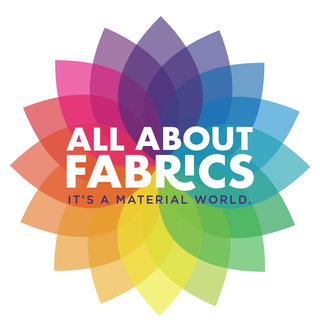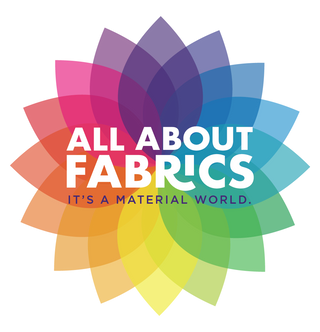The fashion industry has always been a reflection of culture, technology, and social movements. At the heart of fashion’s evolution are the fabrics that have shaped styles and trends throughout history. From the humble beginnings of cotton to the industrial triumph of polyester, certain textiles have revolutionized the way we dress, work, and express ourselves. In this blog, we’ll explore the history and impact of iconic fabrics like denim, cotton, and polyester, and how these materials changed the fashion industry forever.
Whether you're a seasoned designer, a sewing enthusiast, or simply curious about fashion’s deep connection to fabrics, this guide offers a historical perspective on the fabrics that have had the most significant influence on clothing styles and trends.
The Power of Cotton: A Global Staple in Fashion
Cotton has been one of the most widely used textiles for thousands of years, and its journey through history is nothing short of extraordinary. Cultivated for over 7,000 years, cotton was initially grown in regions like India, Egypt, and the Americas. By the 18th century, cotton was booming as a commodity in Europe, primarily due to the demand for lightweight, breathable clothing. The Industrial Revolution and the invention of the cotton gin in 1793 turned cotton into a mass-market fabric, making it accessible to people from all walks of life.
Cotton quickly became the fabric of choice for everyday garments, especially in the United States. Its versatility, softness, and breathability made it the perfect choice for everything from undergarments to casual wear. The rise of "cotton mills" further fueled the growth of the cotton industry, forever linking this fabric to mass-produced fashion.
- Impact on fashion: Cotton’s widespread availability and affordability allowed it to revolutionize the fashion industry by making comfortable and durable clothing accessible to the masses. It played a key role in the development of ready-to-wear clothing and fast fashion.
- Why it’s iconic: Cotton’s soft texture, durability, and adaptability to various garments—from t-shirts and jeans to dresses and bedding—make it a global fashion staple to this day.
- Best uses today: Cotton remains one of the most popular fabrics for casual wear, baby clothing, home textiles, and crafting projects. It’s also eco-friendly when sourced organically, making it a sustainable option for modern fashion.
Denim: From Workwear to Fashion Icon
Few fabrics have had as profound an impact on the fashion industry as denim. Originally designed as durable workwear, denim became a cultural symbol of rebellion, individuality, and style. The history of denim dates back to the late 19th century when it was introduced by Levi Strauss and Jacob Davis as a sturdy fabric for laborers in California’s Gold Rush. Strauss and Davis patented the riveted denim pants we now know as "blue jeans," which became the go-to garment for miners, cowboys, and factory workers.
It wasn’t until the mid-20th century that denim transcended its utilitarian roots and became a fashion statement. In the 1950s, jeans were adopted by youth subcultures like greasers and rock 'n' rollers, cementing denim’s reputation as a symbol of rebellion and counter-culture. By the 1970s and 80s, designer brands began creating premium denim, and jeans became a wardrobe staple for people of all ages.
- Impact on fashion: Denim’s transformation from workwear to fashion icon changed the way people view casual clothing. It blurred the lines between utility and style, making jeans an essential garment for all.
- Why it’s iconic: Denim’s rugged durability, combined with its versatility and ability to adapt to fashion trends, makes it one of the most enduring fabrics in history. It has been a canvas for countless styles—from distressed jeans to designer denim.
- Best uses today: Denim is ideal for jeans, jackets, skirts, and even accessories like bags and hats. Its durability and timeless appeal make it a favorite in both everyday and high-end fashion.
Polyester: The Synthetic Revolution
Polyester is a fabric that revolutionized the fashion industry in a completely different way. First introduced in the 1940s as a synthetic alternative to natural fibers like cotton and wool, polyester quickly gained popularity due to its durability, affordability, and low maintenance. Unlike cotton, polyester resists wrinkles, shrinking, and stretching, making it an easy-care fabric that became a go-to material for modern fashion designers.
Polyester truly exploded onto the fashion scene in the 1970s, with the rise of disco culture. The shiny, sleek appearance of polyester was perfect for the glitzy, vibrant styles of the era. Polyester clothing became synonymous with modernity, innovation, and the new wave of synthetic fabrics that were changing the fashion landscape.
Today, polyester remains a widely used fabric in the fashion industry, often blended with natural fibers to create fabrics that combine the best of both worlds. Its resilience and versatility have made it a staple in everything from activewear to formal attire.
- Impact on fashion: Polyester helped usher in the age of synthetic fabrics, changing the way clothing was produced and maintained. It allowed for mass production at lower costs and introduced a range of new textures and finishes to fashion.
- Why it’s iconic: Polyester’s durability, ease of care, and affordability made it a transformative fabric for the fashion industry. It revolutionized both casual and formal wear, providing designers with new creative possibilities.
- Best uses today: Polyester is widely used in activewear, outerwear, upholstery, and blended fabrics. It’s a go-to fabric for garments that need to be durable, wrinkle-resistant, and easy to clean.
Rayon: The First Semi-Synthetic Fabric
Rayon, often regarded as the first semi-synthetic fabric, was developed in the late 19th century as an affordable alternative to silk. Made from cellulose fibers derived from wood pulp, rayon mimicked the softness and sheen of silk but was far more affordable. It quickly became a popular fabric for everything from dresses to lingerie, offering consumers a luxurious feel without the high price tag.
Rayon’s versatility allowed it to bridge the gap between natural and synthetic fabrics. It could be blended with other materials, dyed easily, and offered the comfort of natural fibers while providing the durability of synthetic ones.
- Impact on fashion: Rayon revolutionized the accessibility of luxury fabrics by providing an affordable alternative to silk, thus making high-end fashion more attainable for the average consumer.
- Why it’s iconic: Rayon’s softness, versatility, and ability to imitate natural fibers like silk made it a game-changer in the fashion industry.
- Best uses today: Rayon is ideal for flowy dresses, blouses, and linings, as well as home textiles like curtains and bed linens.
The Influence of Fabric Innovation on Modern Fashion
The development of these iconic fabrics—cotton, denim, polyester, and rayon—played a crucial role in democratizing fashion. As textiles became easier to produce and maintain, clothing styles shifted from purely functional to expressive and diverse. The accessibility of fabrics like cotton and polyester allowed the fashion industry to grow rapidly, creating opportunities for new styles, trends, and designers to emerge.
Each fabric brought something unique to the fashion landscape:
- Cotton introduced comfort and breathability to everyday wear.
- Denim brought durability and rebellion to the forefront of fashion.
- Polyester revolutionized mass production and care-free clothing.
- Rayon made luxury accessible to all.
These fabrics, among others, have had a lasting impact on the industry, shaping trends and styles that continue to influence fashion today. At All About Fabrics, we offer a wide selection of these fabrics and more, ensuring that whether you're crafting for fashion, function, or home decor, you have access to the materials that have shaped the world of clothing.
Why These Fabrics Remain Popular Today
The fabrics discussed in this blog are not just relics of the past; they continue to be some of the most commonly used materials in modern fashion. Their enduring popularity is a testament to their versatility, comfort, and ability to adapt to changing trends.
At All About Fabrics, we understand the importance of offering a variety of textiles to meet your needs. Whether you're looking for soft cotton for a summer dress, durable denim for a new pair of jeans, or easy-care polyester for activewear, our selection is designed to provide you with high-quality fabrics that stand the test of time.
Conclusion
Fabrics like cotton, denim, polyester, and rayon have not only revolutionized the fashion industry but also transformed the way we dress and express ourselves. Each fabric brought unique qualities that changed clothing styles and trends, and their impact continues to be felt today.
At All About Fabrics, we are proud to offer a wide range of these iconic materials to our customers across the USA and Canada. Whether you're working on a fashion project, creating home textiles, or simply exploring new fabrics for your next creative endeavor, we have the perfect fabric for you. Explore our collection today and join the long tradition of fashion innovators who understand the power of great fabric.


